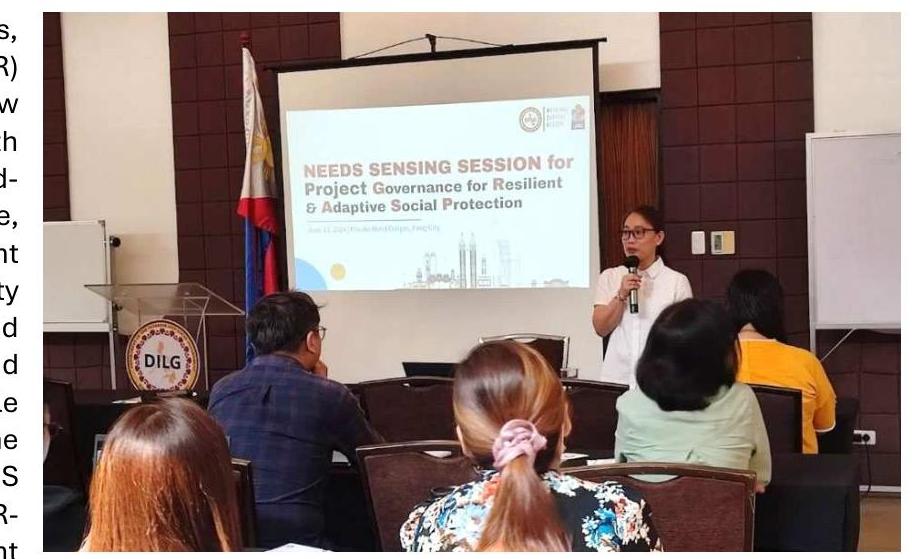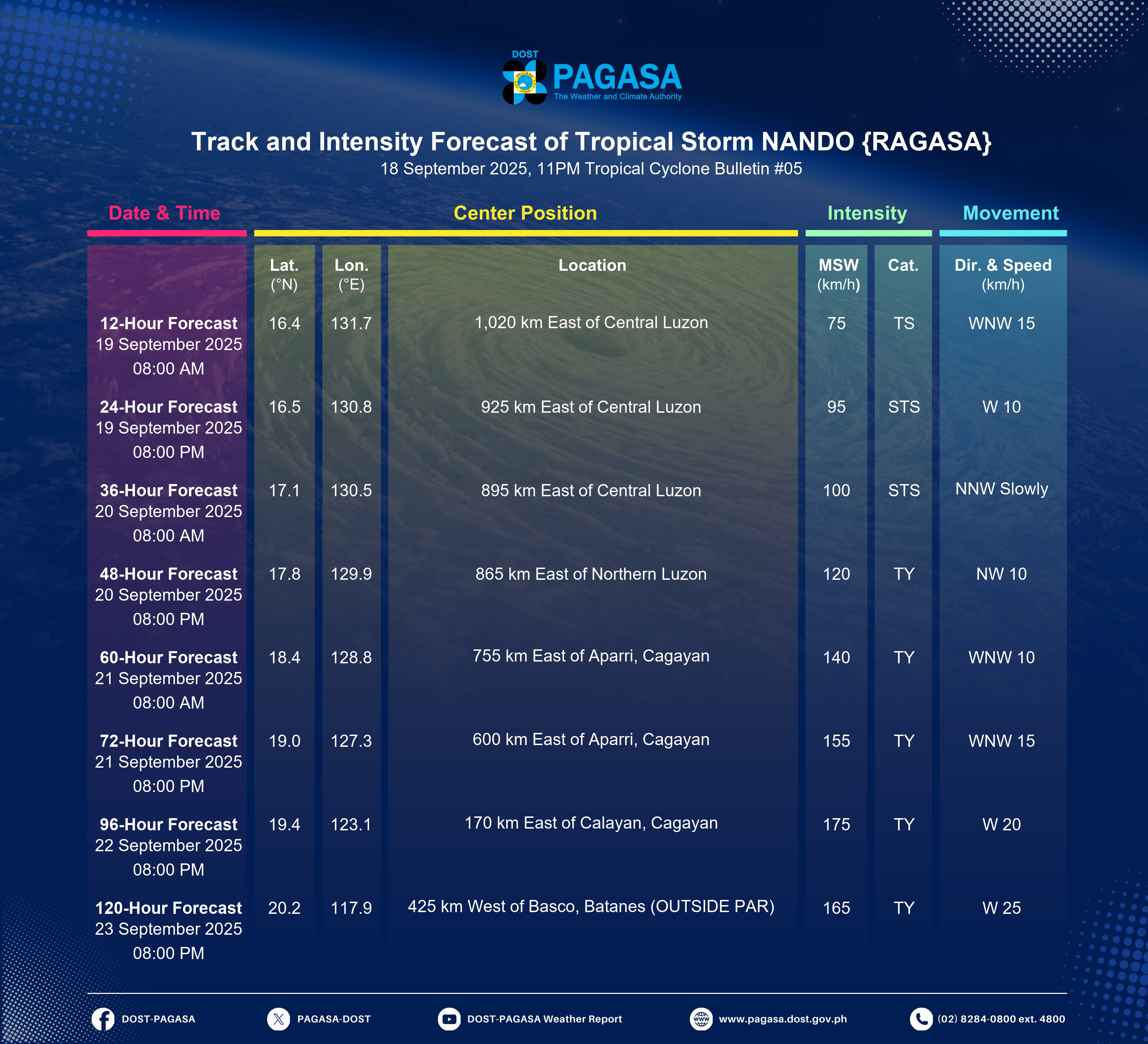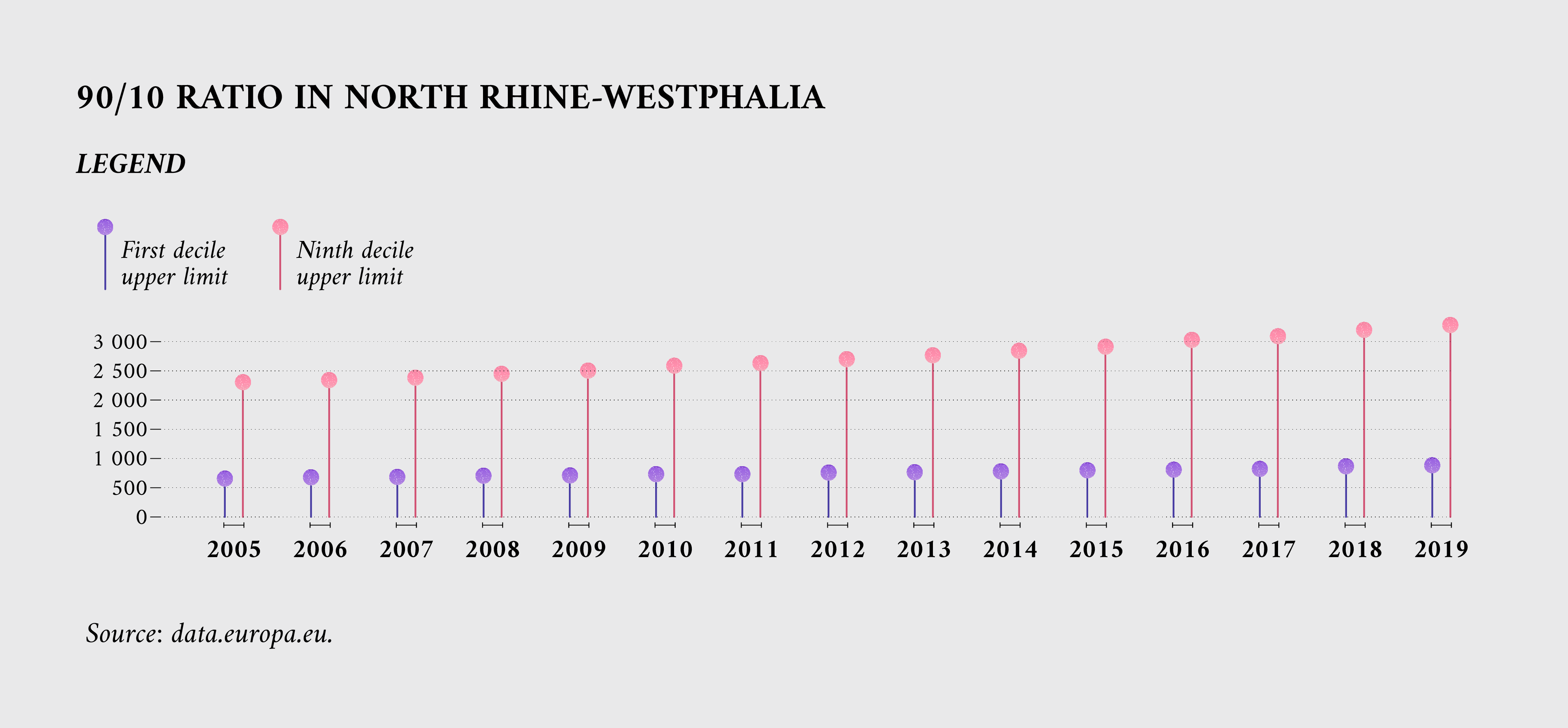More in Economy

Australian National Arrested in Makati for Multiple Fake Identities and Visa Overstay
The Bureau of Immigration (BI) apprehended a 33-year-old Australian man in Makati City accused of using numerous fake identities and overstaying his visa. The arrest took place during a nighttime operation conducted from September 15 to 16 on Pertierra Street in Poblacion, Makati, in cooperation with local police authorities. Identified as Dayle Marc George Campbell, the suspect reportedly operated under various aliases such as "Dion Munro" and "Daniel John," and claimed dual citizenship in Australia and Seychelles. The BI acted after receiving complaints about his use of fraudulent immigration documents. During the arrest, Campbell attempted to evade capture by hiding beneath a parked vehicle. Further investigations revealed that Campbell had previously been reported to the Australian Embassy in 2021 for violating the Anti-Violence Against Women and Their Children Act involving a former partner. He was also found in possession of unlicensed firearms. Immigration records indicate that Campbell entered the Philippines on February 22, 2020, but failed to renew his visa, leading to his status as an overstaying foreign national. The United States Drug Enforcement Administration (DEA) has reportedly placed him under investigation for suspected money laundering and drug trafficking activities, with possible ties to an outlaw motorcycle gang. Campbell is currently detained under BI custody and is facing deportation proceedings.
Economy
|2 min read

Bacolod City Launches Electronic Kiosk to Streamline Building Permit Applications
Bacolod City has introduced a new electronic kiosk at the Office of the Building Official (OBO) aimed at simplifying the application process for building and occupancy permits. The launch event was personally witnessed by Mayor Greg Gasataya, who emphasized the initiative's role in eliminating the need for intermediaries or fixers. Mayor Gasataya stated, \"We are strongly encouraging minimal face-to-face interaction in government transactions, particularly for OBO permits.\" The e-kiosk operates as a self-service computer terminal where applicants can upload applications online, enabling faster and more efficient processing. Applicants receive a printed quick response (QR) code upon submission, allowing them to monitor the status of their permits digitally. Documents are submitted through a secure receiving area, further streamlining the workflow. Engr. Amy Tentia, the OBO officer-in-charge, confirmed that the system is maintained by the Department of Information and Communications Technology. She highlighted the benefits of this technological upgrade in reducing bureaucratic delays and enhancing transparency. Mayor Gasataya added, \"This innovation is a significant step in combating red tape. We have received many complaints about OBO processes previously, and some cases remain pending. The e-kiosk will help address these concerns effectively.\"
Economy
|1 min read

DSWD Clarifies Monitoring Visits and Enforcement Actions on Social Welfare Agencies
The Department of Social Welfare and Development (DSWD) has clarified that its semestral monitoring visits to accredited social welfare and development agencies (SWDAs) serve as routine compliance checks rather than sudden shutdowns. Director Megan Therese Manahan of the DSWD's Standards Bureau stressed, \"The closure of an agency is not abrupt. If your operations and treatment of beneficiaries are proper, there is nothing to worry about.\" These monitoring activities form part of the agency's responsibilities to issue registrations, licenses to operate, and accreditations (RLA) to organizations running social welfare programs. Sanctions or corrective actions may be imposed in cases of non-compliance, which include fund mismanagement, abuse of beneficiaries, document falsification, or endangering clients. Manahan explained that cease-and-desist orders (CDOs), such as those recently enforced in two Central Luzon facilities, are precautionary steps based on verified complaints and follow a formal review process. She noted, \"We have due process in place. It is important that the public understands that CDOs are not issued based on unverified allegations.\" Individuals residing in facilities under CDO enforcement are temporarily placed under DSWD protective custody for up to 30 days. Between February and September this year, the DSWD issued eight such orders. Additionally, Manahan encouraged SWDAs to utilize the newly enhanced online Harmonized Electronic Licensing Permit System (HELPS) for RLA submissions, which has shortened processing times from 20 days to seven. \"We have simplified the licensing application process for SWDAs, but we remain stringent with monitoring and enforcement. Our priority is to assure the public that all NGO licenses undergo thorough vetting by the DSWD,\" she affirmed. The department also highlighted that even anonymous complaints can prompt validation visits to protect vulnerable clients.
Economy
|2 min read

DILG Concludes 2025 Regional Seal of Good Local Governance Assessment in Eastern Visayas
The Department of the Interior and Local Government (DILG) has wrapped up its 2025 assessment of the Regional Seal of Good Local Governance Champions (RSGLGC) for the provinces of Eastern Samar, Leyte, Northern Samar, and Samar. The evaluation process, conducted during the first half of September, comprised thorough document reviews, key informant interviews, and onsite inspections of local government facilities. To maintain objectivity, civil society representatives participated as independent validators throughout the assessment. Following each evaluation, exit conferences were held to share preliminary findings and recommendations, providing local officials an opportunity to engage in feedback and strategic planning. DILG Regional Director Arnel Agabe highlighted that the RSGLGC is intended to be more than a mere accolade, describing it as an ongoing commitment for local government units (LGUs) to strive for governance excellence. He stated, \"This recognition is not about competition, but about transformation. The RSGLGC assists LGUs in pinpointing their strengths and areas needing improvement, offering a roadmap for continuous development.\" Director Agabe also noted that the program fosters innovation and strengthens key systems in critical areas such as financial management, disaster preparedness, peace and order, social welfare, and business-friendliness. Originating in response to requests from LGUs and local government leagues in Eastern Visayas, the RSGLGC now serves as a vital platform to boost institutional performance and enhance public service delivery throughout the region.
Economy
|2 min read

Calabarzon Minimum Wage to Increase by P30-P60 Daily Under New Wage Order
House Committee on Labor and Employment Chairperson and Cavite Representative Jolo Revilla announced a wage increase for minimum wage earners in Calabarzon, Region IV-A. Under the newly issued Wage Order No. IVA-22, workers in Cavite City, Carmona, General Trias, Tagaytay, Trece Martires, and other component cities will receive P600 per day. Meanwhile, employees in Rosario, Kawit, Naic, Silang, and Tanza are set to earn P550 daily. For workers in second- to fifth-class municipalities, notably those in agricultural sectors, daily wages will rise to as much as P525. The wage adjustment will be implemented in two stages: the first phase takes effect immediately upon the publication of the order, followed by a second phase scheduled for April 1, 2026. Revilla emphasized the collaborative effort behind the increase, stating, \"This wage increase is a result of joint action by the government, labor sector, and employers. It is a significant benefit for our workers, especially in Cavite and across CALABARZON. However, it is also clear that this alone does not fully address the daily expenses faced by Filipino families.\" The wage hike was determined through a comprehensive process overseen by the Regional Tripartite Wages and Productivity Board (RTWPB) Region IV-A, which conducted consultations in Lucena, Batangas, Calamba, Antipolo, and Dasmariñas City. The RTWPB received 12 petitions from labor groups requesting increases ranging from P640 to P1,075, up from the previous P520 daily minimum wage. Revilla noted that the adjustment helps narrow the wage disparity between workers in CALABARZON and those in Metro Manila, where the daily minimum wage is P695. \"It is unfair that workers living just minutes away from Manila earn less despite facing the same cost of living. This wage order helps reduce that gap gradually,\" he said. He added, \"We will continue to advocate for a living wage that honors the dignity of our workers. In the New Philippines, our workers should not have to struggle every day just to survive. They deserve to share in the country’s growth and progress. This new wage order is just the beginning—we must ensure that every Filipino receives adequate pay, stable employment, and a secure future.\"
Economy
|2 min read

Philippines Deports Chinese Nationals Linked to Illegal Offshore Gaming and Mining
The Philippine government has deported 91 Chinese nationals implicated in illegal offshore gaming and mining operations following coordinated efforts across multiple agencies. On 19 September, these individuals were transported on Philippine Airlines flight PR336 to Shanghai, marking a significant step in the country’s ongoing campaign against organized crime. The Presidential Anti-Organized Crime Commission (PAOCC), the Bureau of Immigration (BI), and the Chinese Embassy coordinated the operation. According to PAOCC, a total of 103 individuals were approved for deportation due to involvement in unauthorized Philippine Offshore Gaming Operations (POGO), fraudulent activities, and illicit mining practices. While 91 individuals departed on the scheduled flight, 12 others remain detained pending further directives from the Bureau of Immigration. Authorities detailed that 89 deportees participated in unlawful online gaming schemes, and two were connected to illegal mining. The suspects were detained following joint operations across various locations, including Pasay, Parañaque, Laguna, Cebu, Pampanga, Tarlac, and mining sites in Homonhon, Eastern Samar. Executive Secretary and PAOCC Chairman Lucas P. Bersamin emphasized that these deportations are part of sustained efforts to dismantle organized crime networks. Immigration Commissioner Joel Viado reaffirmed the government’s stance, stating that foreigners involved in illegal activities "will be dealt with accordingly." The operation reflects the Philippine government’s commitment to enforcing laws against unauthorized gaming and mining, ensuring the integrity of its immigration system and industry regulations.
Economy
|2 min read

Philippines Prepares for Super Typhoon Nando Amid Southwest Monsoon Threat
MANILA, Philippines – The Philippine Atmospheric, Geophysical and Astronomical Services Administration (PAGASA) has urged communities in Luzon and the Visayas to remain alert and take early action as Tropical Storm Nando (international name Ragasa) is expected to intensify into a super typhoon over the weekend. In a press briefing on Friday, September 19, PAGASA Administrator Nathaniel Servando emphasized the importance of monitoring official updates and ensuring the safety of homes. He stated, \"We advise our fellow Filipinos to closely follow the crucial information provided by PAGASA and act promptly to secure their residences. It is also vital to heed any local government directives issued.\" As of 4 p.m., Nando was located approximately 905 kilometers east of Central Luzon, moving west-northwest at 10 kilometers per hour, slower than its previous speed of 20 kph. The storm has gained strength slightly, with maximum sustained winds increasing from 75 km/h to 85 km/h and gusts reaching 105 km/h. PAGASA forecasters predict that Nando will develop into a severe tropical storm by Friday evening, escalate into a typhoon by Saturday, September 20, and reach super typhoon intensity by early Monday, September 22. The storm is projected to pass near or make landfall over the Babuyan Islands in Cagayan between Monday afternoon and early Tuesday morning. Weather Specialist Benison Estareja highlighted the expansive size of Nando, noting a diameter of 800 kilometers and a radius of 400 kilometers, which means northern and central parts of Luzon will experience significant effects despite the expected landfall location in extreme northern Luzon. Additionally, Nando is forecasted to enhance the southwest monsoon (habagat), causing widespread heavy rains and thunderstorms in southern Luzon, including Metro Manila, parts of Central Luzon, and the Visayas. Starting Saturday morning, PAGASA will raise Tropical Cyclone Wind Signal No. 1 in Northern Luzon to provide residents with a 36-hour preparation window, with a maximum possible warning level of Signal No. 5 anticipated as the storm intensifies. Storm surge warnings for Northern Luzon are also expected to be issued on Saturday. Sea conditions are predicted to become moderate to rough in most of Luzon’s coastal waters from Saturday evening onward, with waves possibly reaching heights of up to 14 meters near extreme northern Luzon. Heavy rainfall from Nando and the amplified southwest monsoon may begin affecting several areas by Sunday, September 21. Estareja noted that Nando’s outer cloud bands have already reached southern Bicol and Samar Island, bringing the likelihood of rain overnight. The southwest monsoon will also contribute to scattered thunderstorms and showers over regions including Catanduanes, Albay, Sorsogon, Masbate, Northern Samar, and Eastern Samar starting Friday evening. Additional isolated rain showers and thunderstorms are expected in Bicol, Metro Manila, the Ilocos and Cordillera regions, Calabarzon, Mimaropa, Zambales, Bataan, and parts of the Visayas due to the monsoon. PAGASA cautions that moderate to heavy rains or severe thunderstorms could result in flash floods and landslides in vulnerable areas. Strong to gale-force winds are forecasted to accompany the monsoon and tropical storm's extension across various regions on Saturday, September 20 (Bicol, Eastern Visayas, Caraga) and Sunday, September 21 (Calabarzon, Bicol, Visayas, Northern Mindanao, Caraga). Tropical Storm Nando is the Philippines’ 14th tropical cyclone for 2025 and the fourth to form in September. It is expected to exit the Philippine Area of Responsibility by Tuesday afternoon. Residents are advised to remain vigilant, regularly follow PAGASA updates, and prepare for possible severe weather disruptions in the coming days.
Economy
|3 min read

Massive Protests Sweep France Against Macron’s Austerity Measures
Across France, hundreds of thousands of people took to the streets on Thursday to protest President Emmanuel Macron’s proposed austerity policies, resulting in significant disruptions to public services and daily life. Organized by trade unions, the nationwide day of action saw public transport grind to a halt, many schools shuttered, and large-scale demonstrations punctuated by occasional confrontations with law enforcement. The left-leaning CGT union estimated that over one million individuals participated in rallies throughout the country, surpassing its previous record turnout of 900,000 during last June’s protests opposing the pension reform raising the retirement age from 62 to 64. Official police figures were markedly lower, reporting over 500,000 protesters, including approximately 55,000 in Paris alone. Interior Minister Bruno Retailleau confirmed that authorities detained 309 individuals amid the unrest and identified around 7,300 protesters as "radicalized." He also reported injuries to 26 police officers. Following his recent appointment as Prime Minister, Sebastien Lecornu sought to ease tensions, pledging to foster ongoing dialogue with social partners. "I reiterate my commitment to pursue a dialogue with all social partners," Lecornu stated, announcing upcoming meetings with union leaders. However, this effort has yet to quell widespread dissatisfaction among unions and the general public. Many demonstrators directly targeted President Macron, whose approval ratings are at historic lows with just 18 months remaining in his term. In the southern city of Nice, protesters symbolically tossed an effigy of the president. Sophie Larchet, a Paris-based civil servant, voiced frustration, saying, "We’ve had enough, he’s tormenting France." Others highlighted growing socioeconomic disparities, criticizing government plans for austerity measures that disproportionately affect lower-income citizens. Bruno Cavalier, a resident of Lyon, remarked, "Every day the richest get richer and the poor get poorer." The anger stems largely from the budget proposal of Lecornu’s predecessor, François Bayrou, which aimed to save 44 billion euros ($52 billion) to reduce France’s substantial debt burden. In an attempt to calm the situation, Lecornu announced intentions to eliminate lifelong privileges for former Prime Ministers and to abandon a controversial plan to eliminate two public holidays. Security forces deployed over 80,000 police officers across the country, supported by drones, armored vehicles, and water cannons. Unions called for strikes resulting in about one-sixth of teachers at primary and secondary levels walking out, while nearly 90% of pharmacies remained closed. Paris Metro services suffered major interruptions, with only the three automated lines operating normally. Union leaders expressed satisfaction with the scale of the mobilization. CGT head Sophie Binet declared, "We have recorded 260 demonstrations across France," adding, "There are thousands and thousands of strikes in all workplaces." Police in Paris and Marseille used tear gas to disperse unauthorized early protests. Footage in Marseille showed a police officer kicking a protester, while police described facing "hostile" demonstrators. In Lille’s outskirts, protesters blocked bus depots early in the morning. Trash collector Samuel Gaillard declared, "We’re fed up with being taxed like crazy." The protests also saw participation from schoolchildren, who obstructed access to Maurice Ravel secondary school in eastern Paris with banners stating, "Block your school against austerity."
Economy
|3 min read

Cebu Province Upgrades Hospital Dental Facilities with New Chairs and X-Ray Units
As part of its ongoing healthcare modernization efforts, the Cebu Provincial Government has distributed new dental chairs fitted with X-ray units to four hospitals across the province. The facilities benefiting from these upgrades are located in Argao, Barili, and Minglanilla to the south, as well as in Tuburan in the midwest. Nikki Catalan, a health program consultant for the Capitol, stated in an interview on Friday, September 19, 2025, that these new dental chairs will replace older, malfunctioning units, enhancing the quality of dental care available to residents. "The nine dental chairs delivered are part of the initial procurement phase," Catalan explained, citing the slow progress often encountered in government acquisitions. Besides dental chairs, the Province has also secured other vital medical equipment including portable suction machines, ECG devices, blood bank refrigerators, digital X-ray machines, and portable nebulizers. These investments are financed through a P650 million budget approved this year by Governor Pamela Baricuatro. Catalan noted that this batch of equipment represents roughly ten percent of the province’s overall healthcare improvement program. Looking ahead, the provincial government plans to purchase anesthesia machines and defibrillators in the next phase, targeting specific shortages identified by the Department of Health’s regulatory and licensing division. These measures aim to further strengthen hospital capabilities and ensure compliance with health standards.
Economy
|2 min read

Experts Urge Focus on Capital Gains and Inheritance Taxes Over Direct Wealth Levies in Europe
European governments facing budget shortfalls and rising inequality should reconsider relying on direct wealth taxes, according to economists and tax experts. While such levies are often proposed to tax the ultra-rich, historical evidence indicates that they rarely yield substantial revenues and frequently fail to target the right taxpayers effectively. The International Monetary Fund (IMF) recently advised against net wealth taxes, suggesting instead that reforms targeting capital income could be more equitable and efficient. Countries like Switzerland, Spain, and Norway maintain various forms of wealth taxes, while France and Britain are currently debating similar measures to alleviate fiscal pressures. Research by Gabriel Zucman, a professor at the Paris School of Economics, highlights that at the very top echelons—such as the wealthiest 0.0001%—tax burdens are minimal in some countries due to strategic asset placement within holding companies. Zucman supports a proposed 2% wealth tax on France's richest 0.01%, emphasizing it as a matter of fairness: \"We need to ensure that billionaires pay at least as much as other social groups. It is a basic question of justice and respect for the fundamental principles of tax fairness.\" Still, wealth taxes typically raise only modest proceeds, often mere fractions of GDP, since affluent individuals can shield assets through trusts, exempt items, or relocation to tax havens. Moreover, these taxes apply uniformly across asset types, potentially penalizing owners of lower-yield investments. In contrast, capital income taxes—on dividends and capital gains—are imposed on actual returns and remain consistently lower than taxes on labor income in many countries, including France, Germany, Italy, South Korea, and Japan. The OECD points out that this favorable treatment of capital gains contributes to the low effective tax rates for wealthy individuals. Experts propose closing exemptions and ensuring capital gains are taxed upon sale, inheritance, or when taxpayers move to low-tax jurisdictions. The inheritance tax, often dismissed as a \"death tax,\" is praised by the OECD for its efficiency and fairness, as it does not disincentivize savings or bequests when appropriate exemptions are in place. However, many countries offer substantial allowances for business assets in inheritance tax regimes or do not tax unrealized gains, limiting revenue potential. Examples include Italy, Poland, South Korea, Ireland, Spain, and Germany, where heirs may enjoy significant exemptions. Balancing revenue generation with competitiveness remains a critical challenge, as excessively aggressive taxation could prompt wealthy individuals to relocate. Nonetheless, groups like the Tax Justice Network stress that reducing inequality benefits society broadly. Chief Executive Alex Cobham warned, \"High inequalities undermine economic growth. They undermine life expectancy across the board.\" This ongoing debate underscores the complexity of designing tax systems that can effectively address wealth concentration while sustaining economic vitality.
Economy
|3 min read
